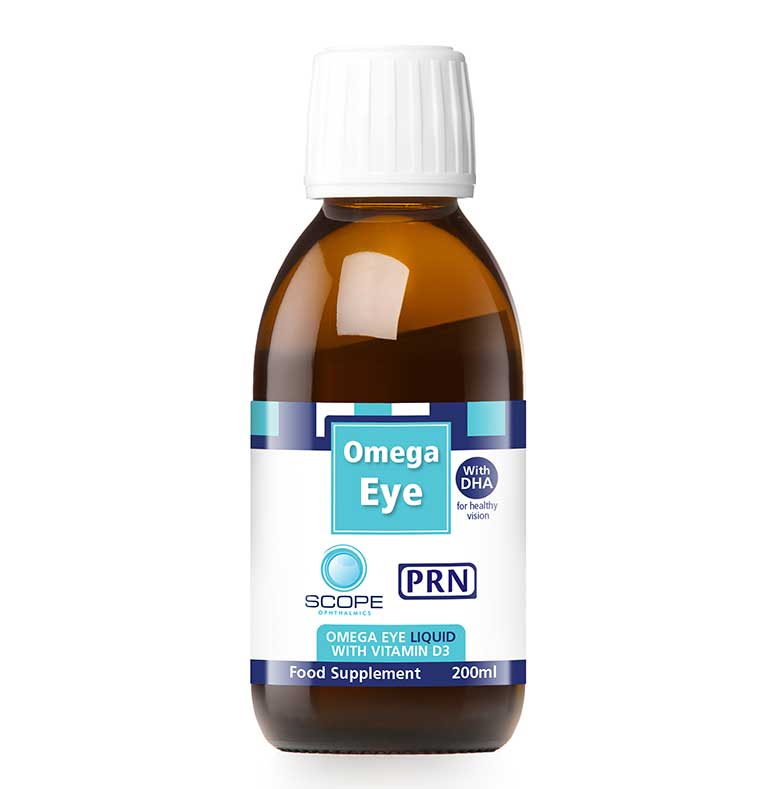- OT
- Life in practice
- Practitioner stories
- I could not live without...Omega Eye
I could not live without…
Omega Eye
Practice director and independent prescribing optometrist, Sarah Farrant, discusses why high dose Omega 3 is so important

17 December 2017
I have had an interest in dry eye management since I began practising in 2003.
Dry eye disease (DED) is an under-diagnosed and under-managed condition. Up to a third of patients coming into an optometry practice suffer from some degree of dry eye, and this number is set to increase with our ageing population, lifestyle choices and air-conditioned environments.
Providing a management plan for DED patients who are seen in our dry eye clinic has now become vital to our independent practice, and it is an integral part of the effective treatment of patients.
As part of these management plans, I encourage supplementation with Omega 3 fatty acids, often as part of the early steps in the management and treatment of DED and meibomian gland dysfunction (MGD).
Dry today, gone tomorrow
I recommend and stock Omega Eye in my practice.
Omega Eye has been specifically developed to relieve the symptoms of dry eye, blepharitis and MGD from within. It comes in a dose form that provides necessary lipids for the tear film to help impact on tear osmolarity and tear break up time.
Poor meibum quality in patients with MGD may contribute to inflammation, so having a supplement that can improve the quality of the meibum is helpful, which Omega Eye has been proven to do.¹
My patients are coming back with excellent results from taking it. After six to 12 weeks of taking Omega Eye, the quality of meibum improves, the lids become less inflamed and most patients report a symptomatic improvement.
I also monitor their progress over time with imaging and TearLab Osmolarity testing, as we can objectively and quantifiably show patients that the treatment works. In my experience, this aids compliance. If patients see that their images and numbers are improving, even though they might not be feeling better in the early stages of treatment, they’re likely to continue with the therapy.
I am confident that this aspect of therapy is helping to benefit my patients, along with the other strategies that they follow, such as preservative-free artificial tears and warm compressing.

Omega on the market
There is an abundance of Omega 3 supplements available, but it is important to consider the form and dose.
The majority of Omega 3 products that can be purchased are in the ethyl ester form, which contains alcohol. Studies have shown that ethyl esters are the least bioavailable forms of Omega 3, compared to the triglyceride forms.² It is the re-esterified form that has higher bioavailability in the body. During the re-esterification process, the alcohol is removed from ethyl ester fish oil to create a more natural form of omega 3 fatty acids. This re-esterified triglyceride (rTG) form of omega 3 is better absorbed and better tolerated with less gastrointestinal side effects.
Omega Eye contains very high levels of Omega 3 (1680mg EPA and 560mg DHA), offering a therapeutic dose in four capsules (or one 5ml spoonful of Omega Eye liquid) daily.
This therapeutic dose helps to provide necessary anti-inflammatory benefits. With most other Omega 3 supplements, you cannot reach this dose as the levels of Omega 3 in the form of EPA and DHA are not as high.
"My patients are coming back with excellent results from taking it. After six to 12 weeks of taking Omega Eye, the quality of meibum improves, the lids become less inflamed and most patients report a symptomatic improvement"
Patient compliance
In my experience, effective communication with patients is extremely important to ensure that they follow the correct management plan and receive the most appropriate products, and use them effectively.
At our practice, we make sure that the team educate the patients on any products that I want them to use. We also make sure that when I, or my colleagues, recommend a certain product to a patient, we have stock available in the practice.
I believe that the compliance rate for patients who take the product away from the practice is higher than that for patients who get products elsewhere.
Omega Eye is proven to reduce osmolarity and other disease markers in six to 12 weeks.1 This allows me to confidently recommend a product that is clinically proven to be effective.
For more information on Omega Eye, visit www.scopeophthalmics.com.
References
- Epitropoulos, A. T., Donnenfeld, E. D., Shah, Z. A., Holland, E. J., Gross, M., Faulkner, W. J., … Perry, H. D. (2016). Effect of Oral Re-Esterified Omega-3 Nutritional Supplementation on Dry Eyes. Cornea, 35(9), 1185–1191
- Dyerburg J, et al. Bioavailability of marine n-3 acid formulations, Prostaglandins Leukotrines Essent Fatty Acids (2010), doi: 10.1016/j.plefa.2010.06.007.6.


Comments (0)
You must be logged in to join the discussion. Log in